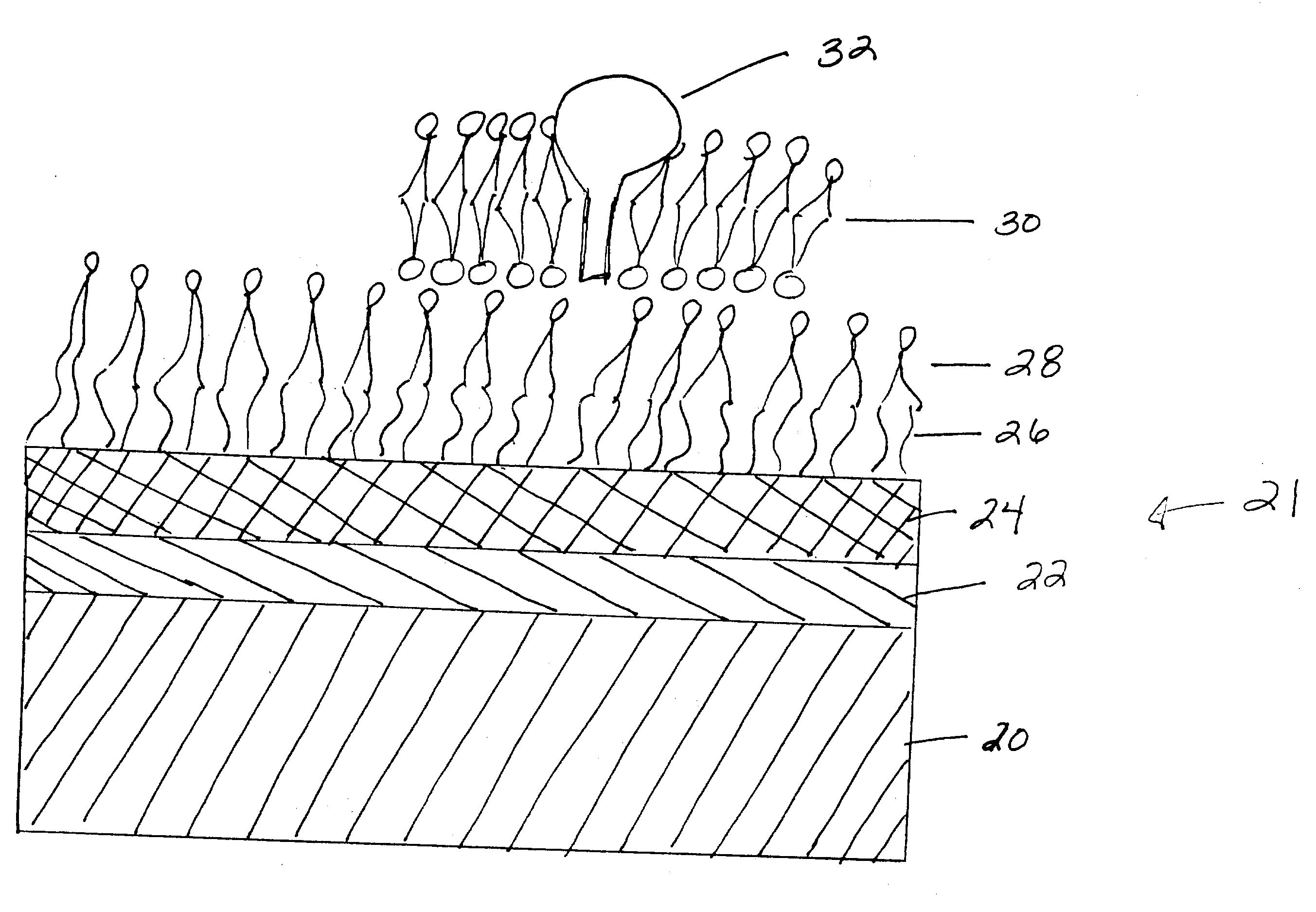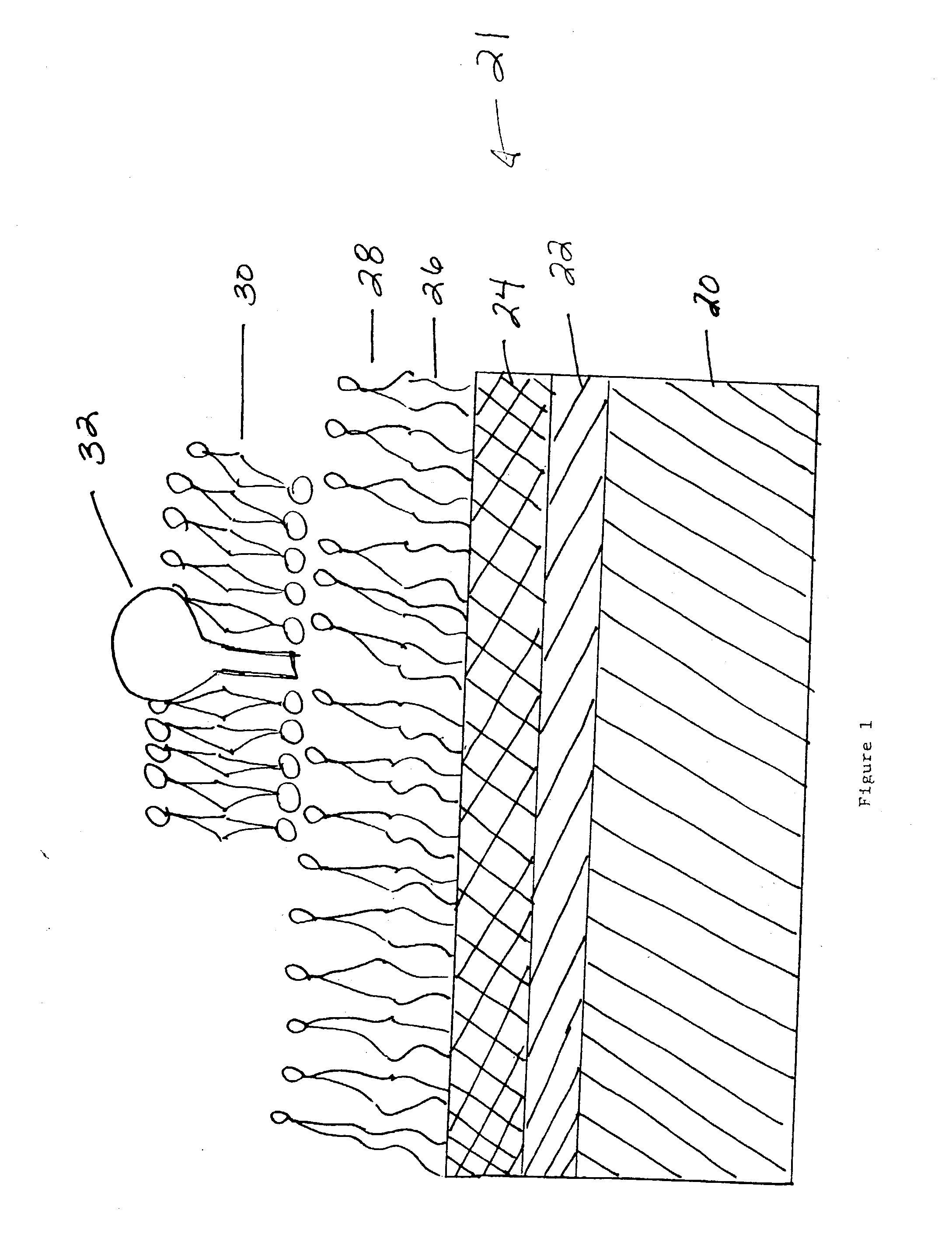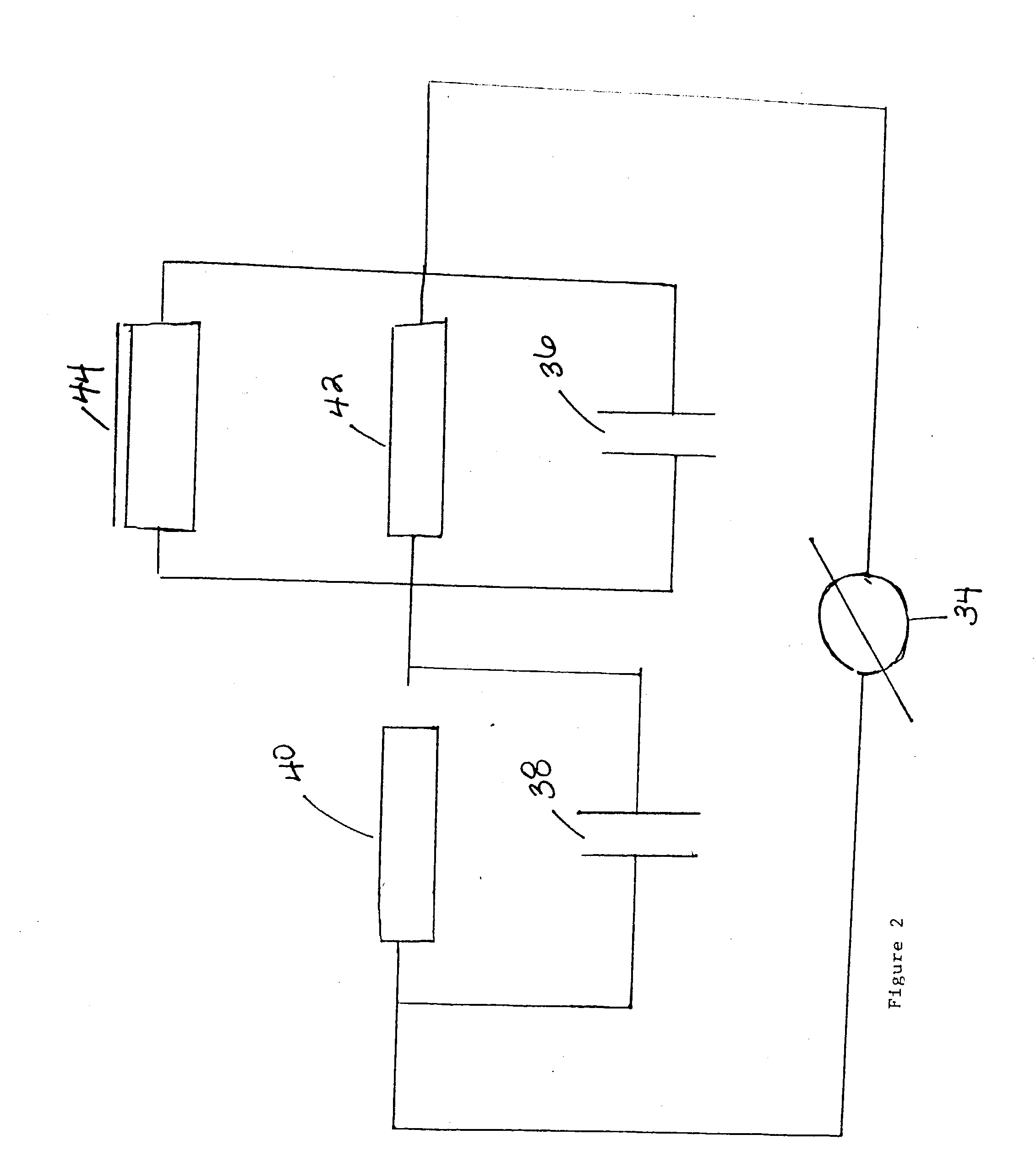Methods for studying ion channels incorporated onto a solid-supported membrane
a solid-supported membrane and ion channel technology, applied in liquid/fluent solid measurement, instruments, electrochemical variables of materials, etc., can solve the problems of stability and size, inability to easily interpret, and insufficient sensitive and/or accurate, etc., to achieve high mechanical stability, high transport rate, and high density of ion channels
- Summary
- Abstract
- Description
- Claims
- Application Information
AI Technical Summary
Benefits of technology
Problems solved by technology
Method used
Image
Examples
Embodiment Construction
[0033] This example demonstrates the response of Kv1.5 channel protein to PG490798, an inhibitor of Kv1.5 channels, using a method according to the present invention and a solid-supported membrane, as described in FIG. 1. Isolated wells on the gold and lipid coated layer of the solid-supported membrane are formed using Devcon 5 minute epoxy (Product 14250). The wells are constructed by the formation of a random set of holes in an insulating surface covering the face of the solid supported membrane using a grid design for application of the insulating layer, and forming defects within the insulating area. These spontaneous or engineered holes form wells with the appropriate properties for channel insertion and pharmacological studies of the channel. A suspension of membranes from cells expressing recombinant Kv1.5 channel protein are added to the prepared well on the membrane. Currents are measured using pClamp 5.5 software 20 minutes after addition of the membranes, as depicted in F...
PUM
| Property | Measurement | Unit |
|---|---|---|
| pH | aaaaa | aaaaa |
| electrical | aaaaa | aaaaa |
| stability | aaaaa | aaaaa |
Abstract
Description
Claims
Application Information
 Login to View More
Login to View More - R&D
- Intellectual Property
- Life Sciences
- Materials
- Tech Scout
- Unparalleled Data Quality
- Higher Quality Content
- 60% Fewer Hallucinations
Browse by: Latest US Patents, China's latest patents, Technical Efficacy Thesaurus, Application Domain, Technology Topic, Popular Technical Reports.
© 2025 PatSnap. All rights reserved.Legal|Privacy policy|Modern Slavery Act Transparency Statement|Sitemap|About US| Contact US: help@patsnap.com



